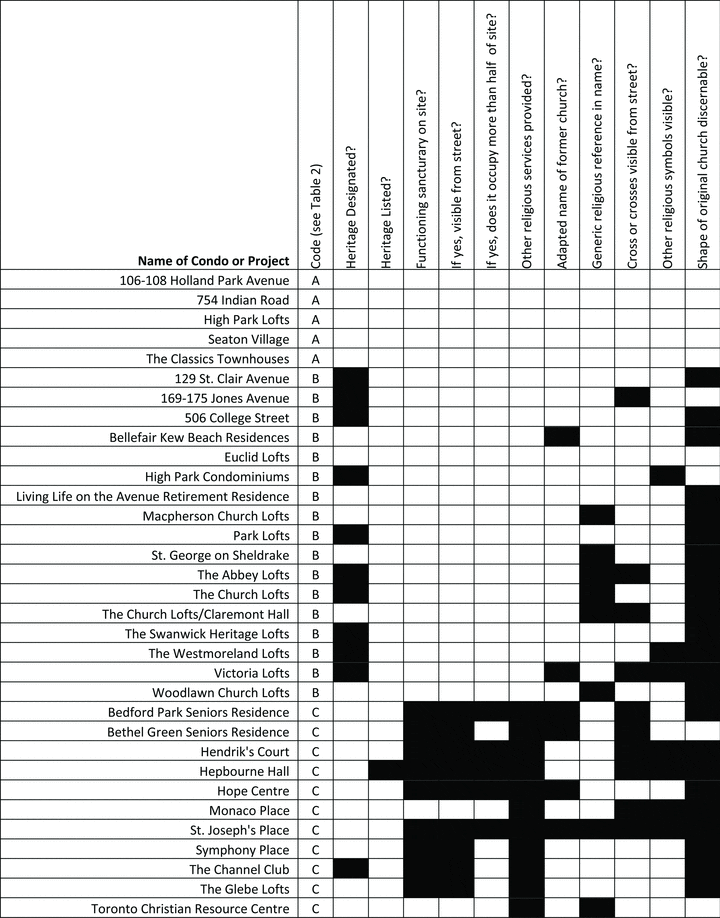Table 2 from Hackworth and Gullikson (2013) describes three Toronto church conversion categories
A previous post is devoted to Table 1 from a paper by Hackworth and Gullikson (2013) about church conversions in Toronto.
Table 2 from the paper (see below) presents 33 church conversions in terms of three categories. A fourth category involves no change. That is, the site of a church remains religious in form and function. Church sites that remained as places of worship were not formally studied for the Hackworth and Gullikson (2013) research project.
| Outcome | Description | Function | Form | Code |
|---|---|---|---|---|
| Complete replacement | Congregation sells church and land to developer; developer demolishes church; replaces with use that has no physical or functional reference to the church that existed before | Secular | Secular | A |
| Mixed form, secular function | Congregation sells church and land to developer; developer demolishes or converts the church to residences but replaces at least some element or reminder of that church; examples: name, symbols, facade, plaque | Secular | Mixed | B |
| Mixed function and form | Congregation sells all or part of their church and land to a developer who builds around all or part of their initial place of worship; a new church (or some other service extension of the church) is built or renovated on site | Mixed | Mixed | C |


Very interesting data, Jaan. Thank you for your work on this. Notable is that very few of these buildings provide an “anchor community” which still carries on the heritage function for which the place was designed, i.e. worship and community engagement. Turning a church building into a high end condo loses all the essence for which the bricks and mortar of the place were consecrated. In the Wesley Mimico United Church case, we are a community-based group doing a community-development of this property honouring the heritage elements which include not only bricks and mortar but also a worshipping congregation seeking to serve and engage the community and provide owner-occupied housing for seniors who enjoy living in the Mimico-Lakeshore walkable and scenic community. The true heritage is being maintained as congregation, community engagement and service, AND facilities are adapted – repurposed, renewed, added to, and above all, made accessible – for a revitalizing Mimico-Lakeshore community.
I’m pleased to have the opportunity to research the topic of church conversions in Toronto, Harry. It’s a most interesting topic.
My next steps involve a post summarizing the story of Deer Park United Church followed by one regarding the Bellefair United Church redevelopment.
After that, if time permits, I will put together my reflections regarding the preliminary comments that Heritage Preservation Services staff have circulated. As I recall, the comments can be found at the Mimico Residents Association website.
My sense, based on what I’ve learned to date, is that further conversations with Heritage Preservation Services, the Mimico Residents Association, other recognized community groups, and Councillor Mark Grimes’ Office are required. Their concerns, whatever form the concerns may take, are important and need to be addressed. The optimal solution is likely to be less than perfect for any of the stakeholders.
It’s also my sense that, in its role as developer, the church and congregation need expert legal advice and planning advice. That is what a condo developer would have as part of its planning strategy.
A non-profit housing developer, such as the one that is building on the severed portion of the Asbury and West United Church property, would also I imagine have access to such expertise.
The Asbury and West redevelopment story is of particular interest because the church originally encountered resistance to its redevelopment proposal involving severance of the site. In time, the church was able to arrive at a solution.
As Hackworth and Gullikson (2013) emphasize, the direction in which a church conversion goes is determined in the context of a regulated land-use system. Churches are not autonomous agents in this regard. In order to have an influence on the decision-making process, they need to be aware of legal and political framework within which planning decisions are made.
There is an element of case-by-case negotiation, and interpretation, with regard to planning decisions related to heritage properties. The gathering and presentation of evidence, and the sharing of facts back up by evidence, are essential ingredients in such negotiations. Interpretation often concerns the intent and applicability of legislation, the definition of terms, and the study of precedents.
With regard to church conversions in Toronto, the negotiation occurs within the confines of clearly defined legal and planning parameters, which are based upon the Ontario Heritage Act and related planning regulations.
The case studies – in particular the ones involving listed and designated church buildings – that Hackworth and Gullikson refer to, and more recent case studies that I’ve highlighted in previous posts, are helpful by way of background.
Speaking as a layperson, my sense is that a church and congregation acting as a developer, as in the case of any other developer, must of necessity call upon the advice of lawyers and professional planners.